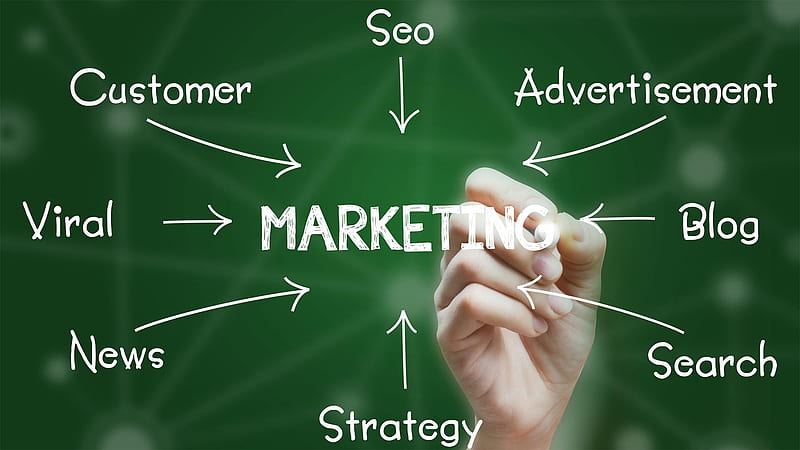The Science of Retention Marketing: Behavior Insights That Drive Loyalty
The Science of Retention Marketing: Behavior Insights That Drive Loyalty
Blog Article

In today's competitive business landscape, retaining existing customers is as crucial as acquiring new ones. Retention marketing has emerged as a vital strategy that focuses on fostering long-term relationships with customers, ultimately driving loyalty and increasing lifetime value. As brands strive to stand out in crowded markets, understanding the behavior of consumers becomes essential. This approach not only enhances the customer experience but also creates a sustainable growth model that companies can rely on.
One agency making significant strides in this field is Forge Digital. With a clear emphasis on data-driven insights, Forge Digital specializes in developing tailored retention marketing strategies that resonate with customers. By analyzing behavior patterns and preferences, they help brands connect more deeply with their audience, ensuring that customer loyalty is not just a goal but a reality. In this article, we will explore the science behind retention marketing and the behavioral insights that fuel customer loyalty.
Understanding Retention Marketing
Retention marketing focuses on the strategies and tactics that businesses use to keep their existing customers engaged and satisfied. Unlike traditional marketing, which often emphasizes acquiring new customers, retention marketing seeks to enhance the lifetime value of current customers through targeted engagement initiatives. This approach highlights the importance of understanding customer behavior, preferences, and needs in order to foster loyalty and encourage repeat purchases.
At its core, retention marketing relies on data-driven insights that help businesses identify patterns in customer behavior. By analyzing customer interactions, purchase history, and feedback, companies can tailor their marketing efforts to align more closely with what their customers want and expect. This not only improves the customer experience but also builds a stronger emotional connection, making customers feel valued and understood.
A successful retention marketing strategy may involve personalized emails, loyalty programs, and regular communication that keeps customers informed and engaged. Agencies like Forge Digital specialize in creating these tailored experiences, aiming to turn satisfied customers into brand advocates. This not only drives loyalty but also enhances the overall brand reputation within the competitive landscape.
Behavioral Insights for Customer Loyalty
Understanding customer behavior is crucial for developing effective retention marketing strategies. Insights into why customers choose to stay or leave can help brands tailor their messaging and offerings. One key factor is personalization; when customers feel that a brand understands and caters to their individual preferences, they are more likely to develop a connection. Forge Digital emphasizes the importance of leveraging customer data to create personalized experiences, ensuring that messages resonate on a personal level.
Another important insight is the role of trust in customer loyalty. Brands that are transparent about their practices, offer reliable products, and provide exceptional customer service build a solid foundation of trust with their customers. When customers feel empowered and confident in their choice, they are more likely to return. Retention marketing strategies should focus on cultivating this trust through consistent communication and engagement, reinforcing the brand’s commitment to customer satisfaction.
Additionally, emotional connection plays a pivotal role in fostering loyalty. Customers are often driven by emotional responses rather than just transactional interactions. Brands that craft compelling narratives and engage customers emotionally can enhance loyalty significantly. By utilizing storytelling and sharing authentic brand values, companies can connect with customers on a deeper level. This approach not only enhances retention but also encourages customers to advocate for the brand within their communities.
Customer retention marketing
Strategies for Effective Retention
To enhance customer loyalty, businesses must focus on personalized communication. Tailoring messages and offers based on customer preferences and behaviors creates a sense of individual attention. Utilizing data analytics allows brands to understand their audience better and send relevant content, making customers feel valued and increasing the likelihood of repeat purchases.
Another effective strategy is implementing loyalty programs. By rewarding customers for their ongoing patronage, companies not only encourage repeat business but also foster a community around their brand. Programs that offer exclusive benefits, discounts, or early access to new products can motivate customers to engage more deeply with the brand, ultimately strengthening their loyalty.
Regularly seeking customer feedback is essential for improving retention efforts. Engaging with customers about their experiences and preferences helps businesses identify areas for improvement and showcases a commitment to customer satisfaction. By acting on this feedback and adapting offerings, brands can better align themselves with their customers' needs, making it more likely that they will remain loyal over time.
Measuring Success in Retention Marketing
Measuring success in retention marketing involves analyzing various key performance indicators that reflect customer loyalty and engagement. One of the most crucial metrics is the Customer Retention Rate, which indicates the percentage of customers a business retains over a specified period. A higher retention rate usually signals that customers are satisfied and continue to find value in the brand. Additionally, tracking repeat purchase rates helps businesses understand how often customers return to make another purchase, providing insight into long-term loyalty.
Another important metric is the Net Promoter Score, or NPS, which gauges customer satisfaction and their likelihood of recommending the brand to others. A high NPS indicates that customers are not only satisfied but also enthusiastic enough to promote the brand, leading to organic growth. Segmenting customers based on their behavior can enhance insights; for example, identifying groups that consistently engage with the brand can help tailor strategies to maintain this loyalty.
Finally, businesses should consider the Lifetime Value of a Customer (LTV), as it provides a comprehensive view of how much revenue a customer is expected to generate over their entire relationship with the brand. By comparing LTV against customer acquisition costs, companies can evaluate the effectiveness of their retention marketing strategies and optimize their investments. Retention marketing, when measured effectively, reveals actionable insights that can drive long-lasting loyalty and sustainable growth.
Report this page